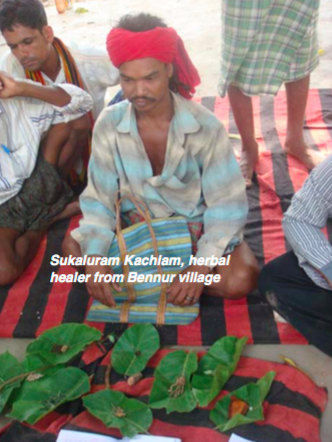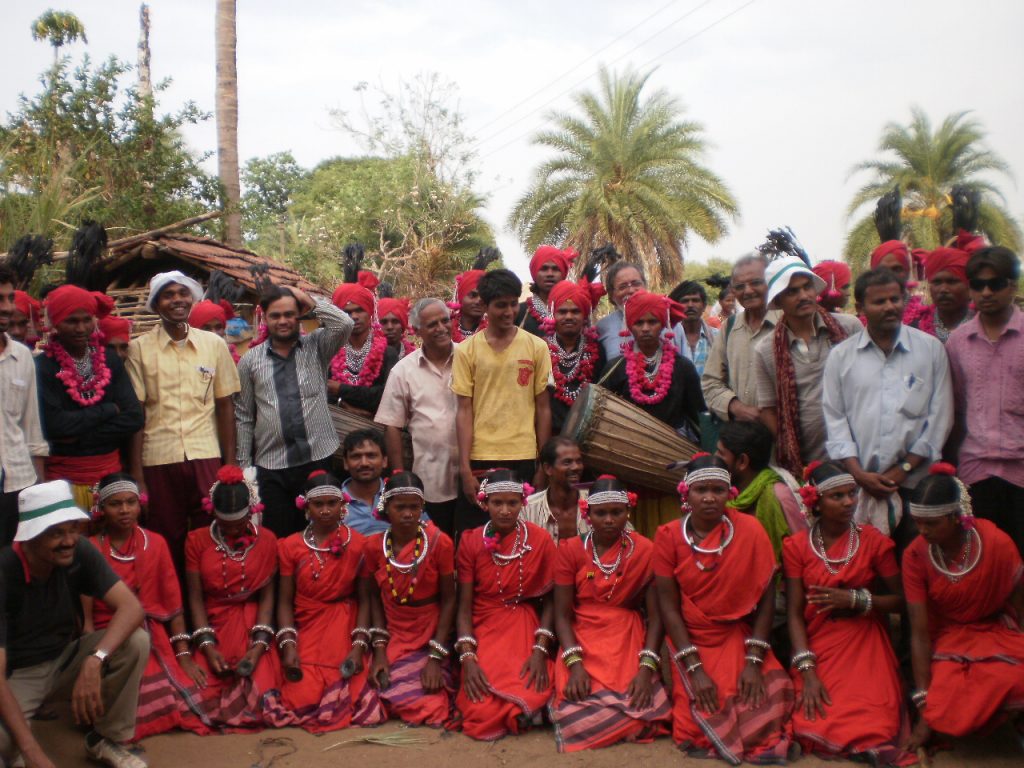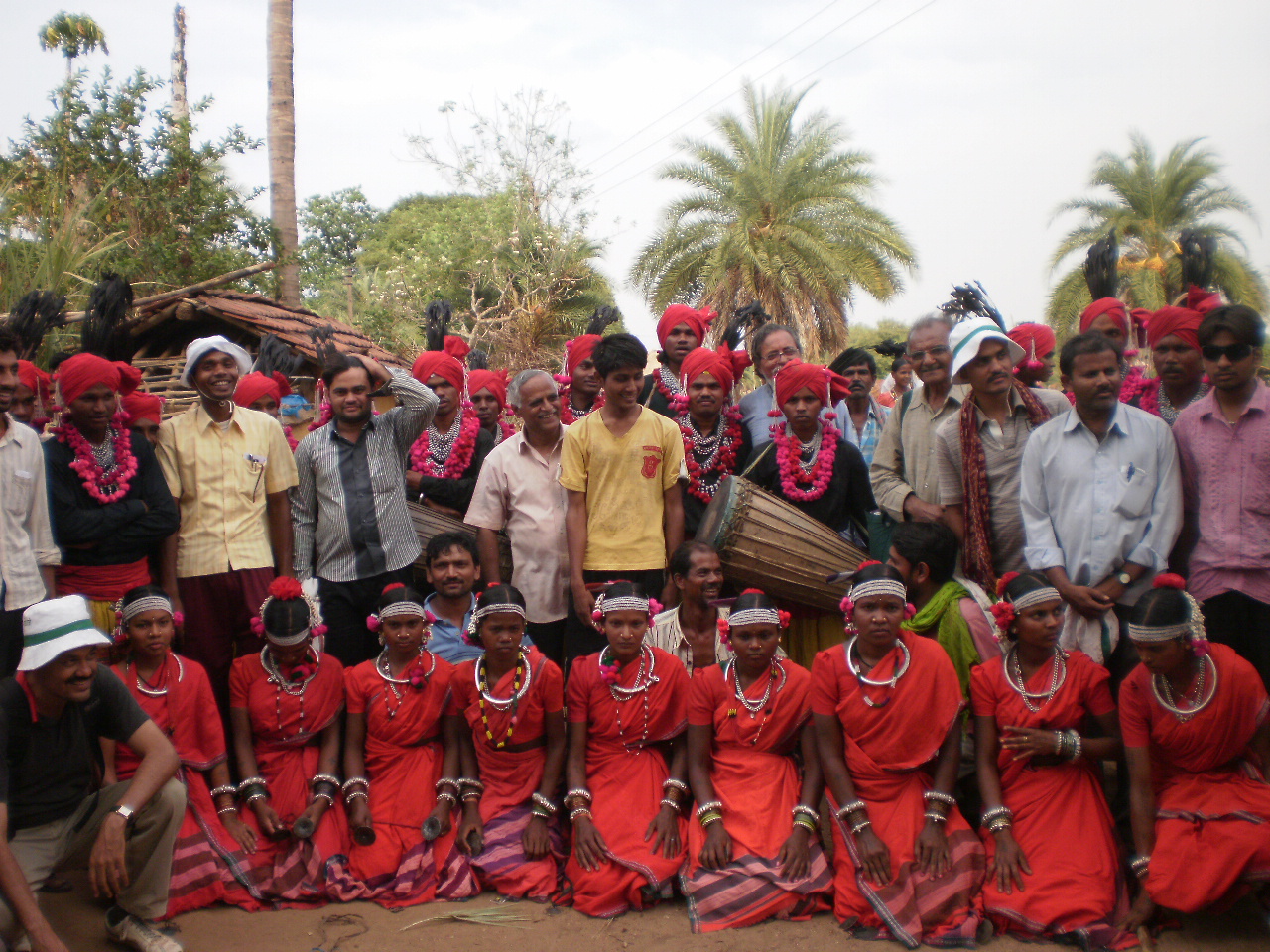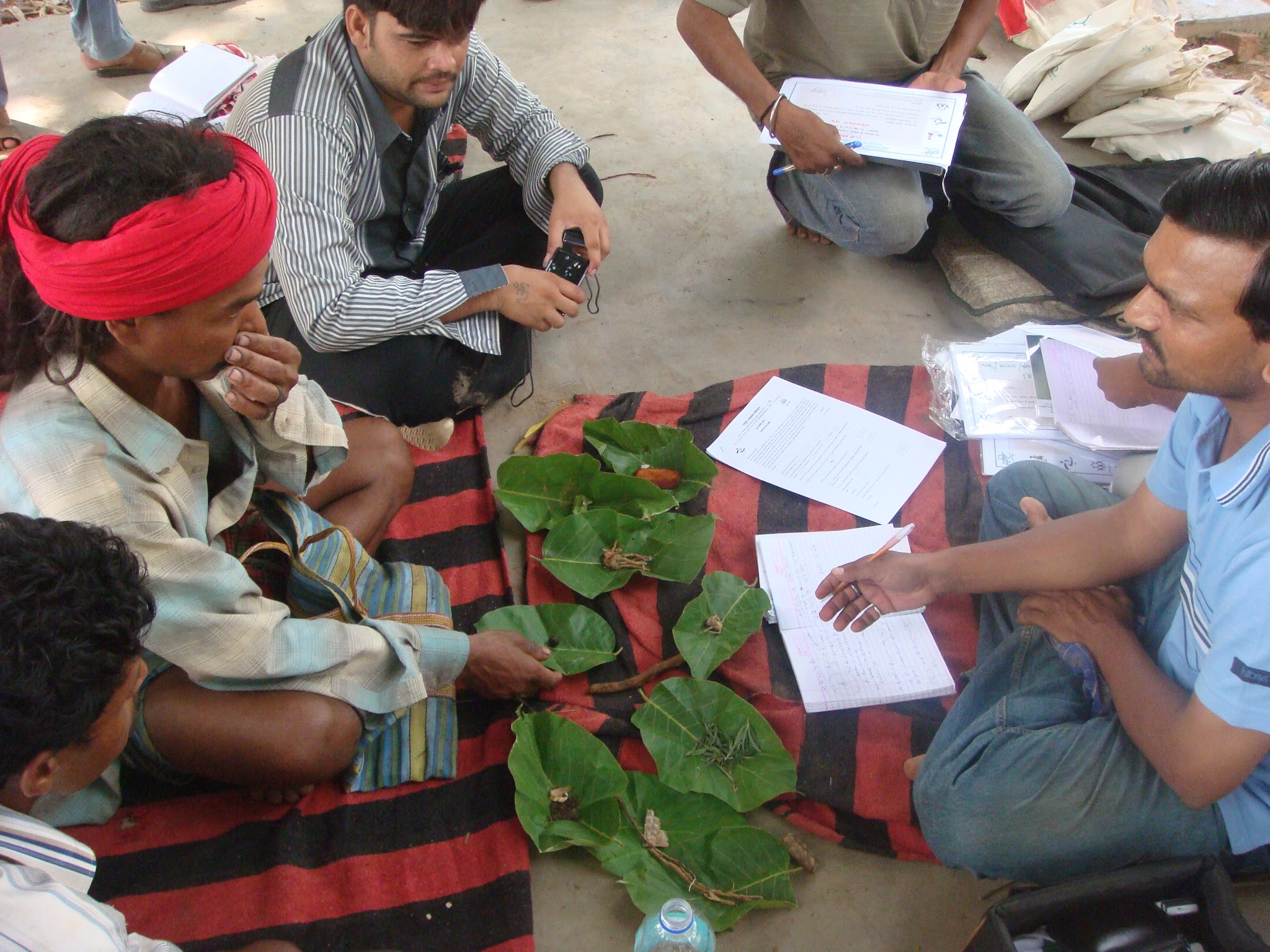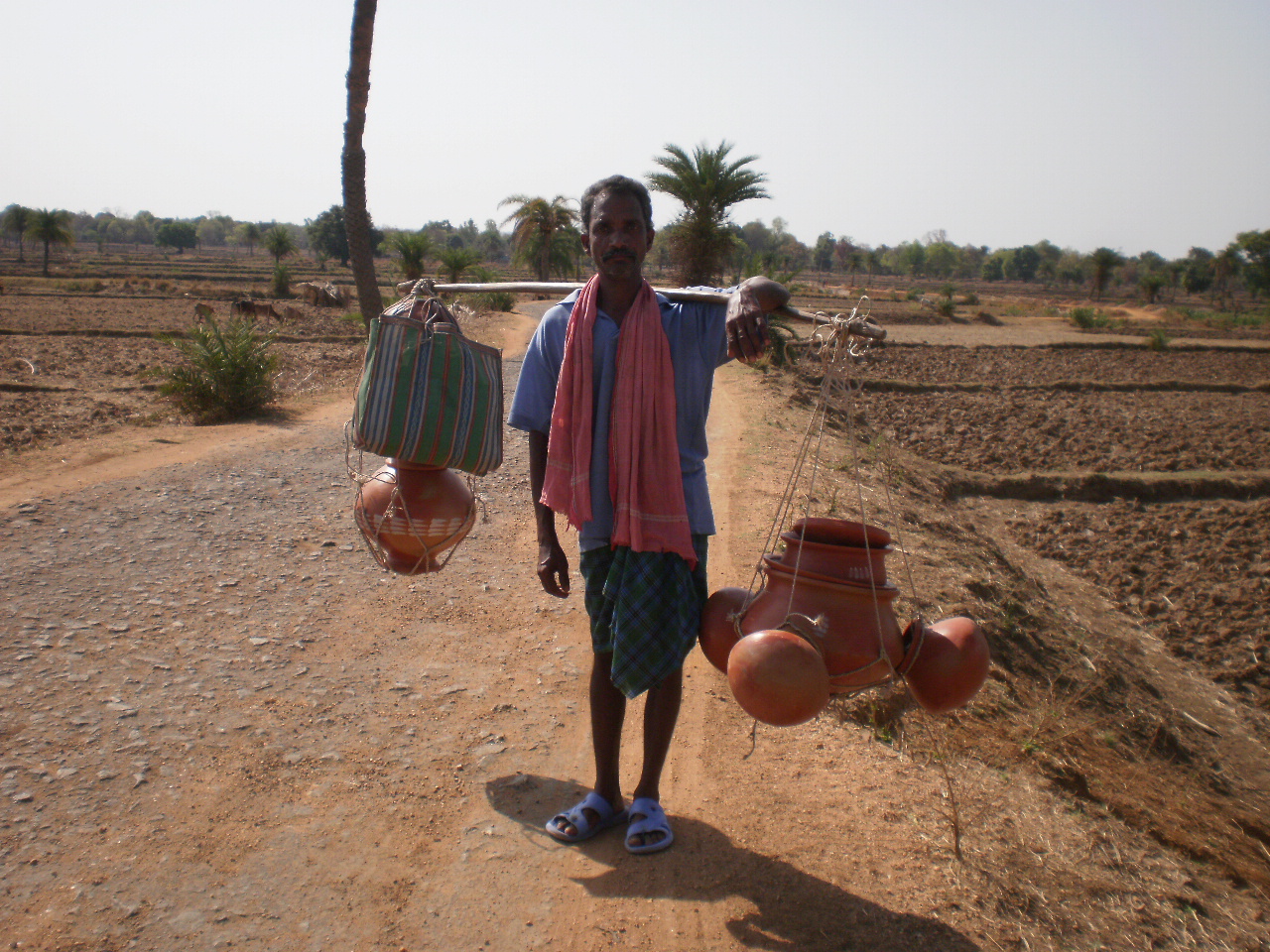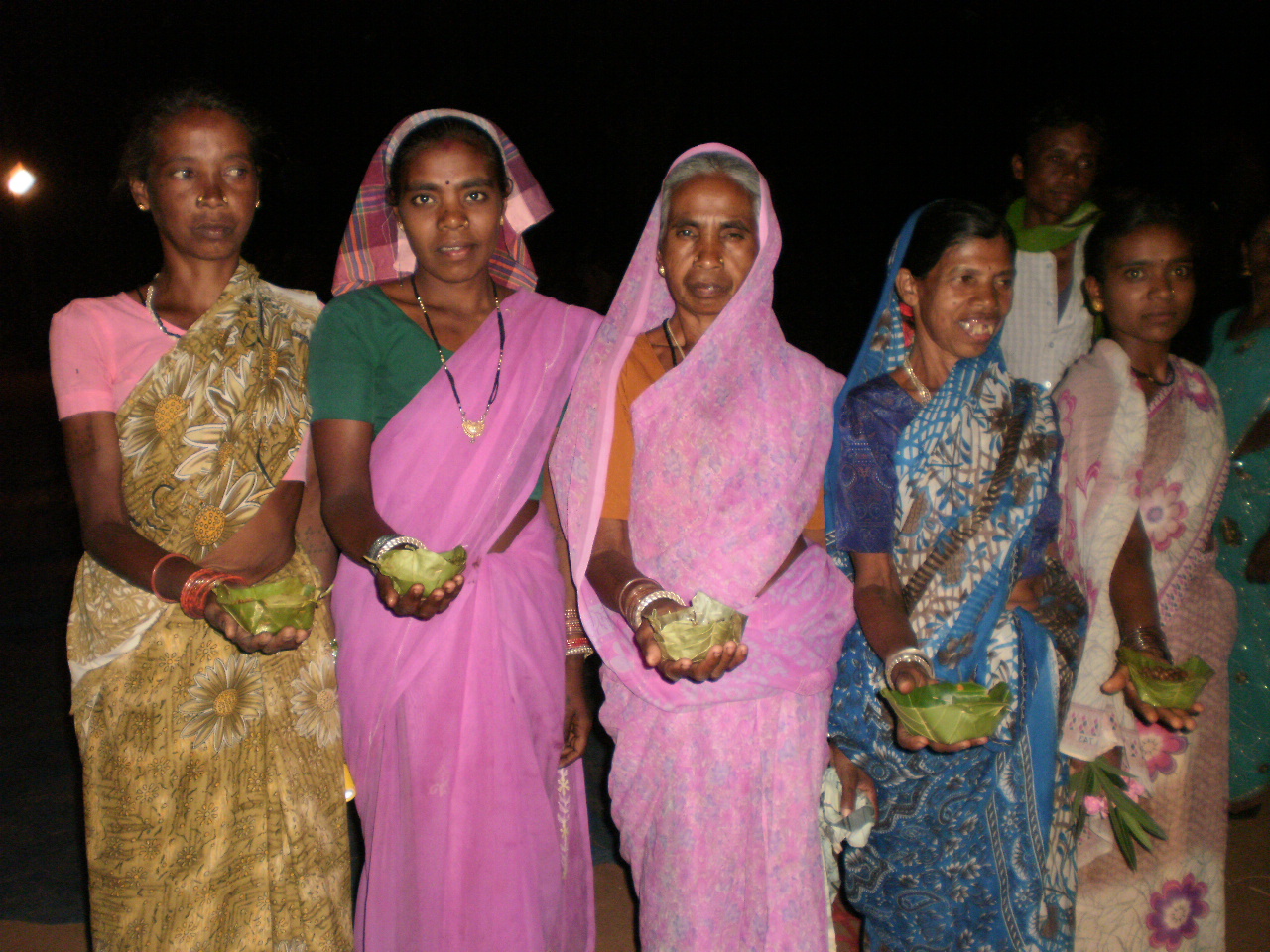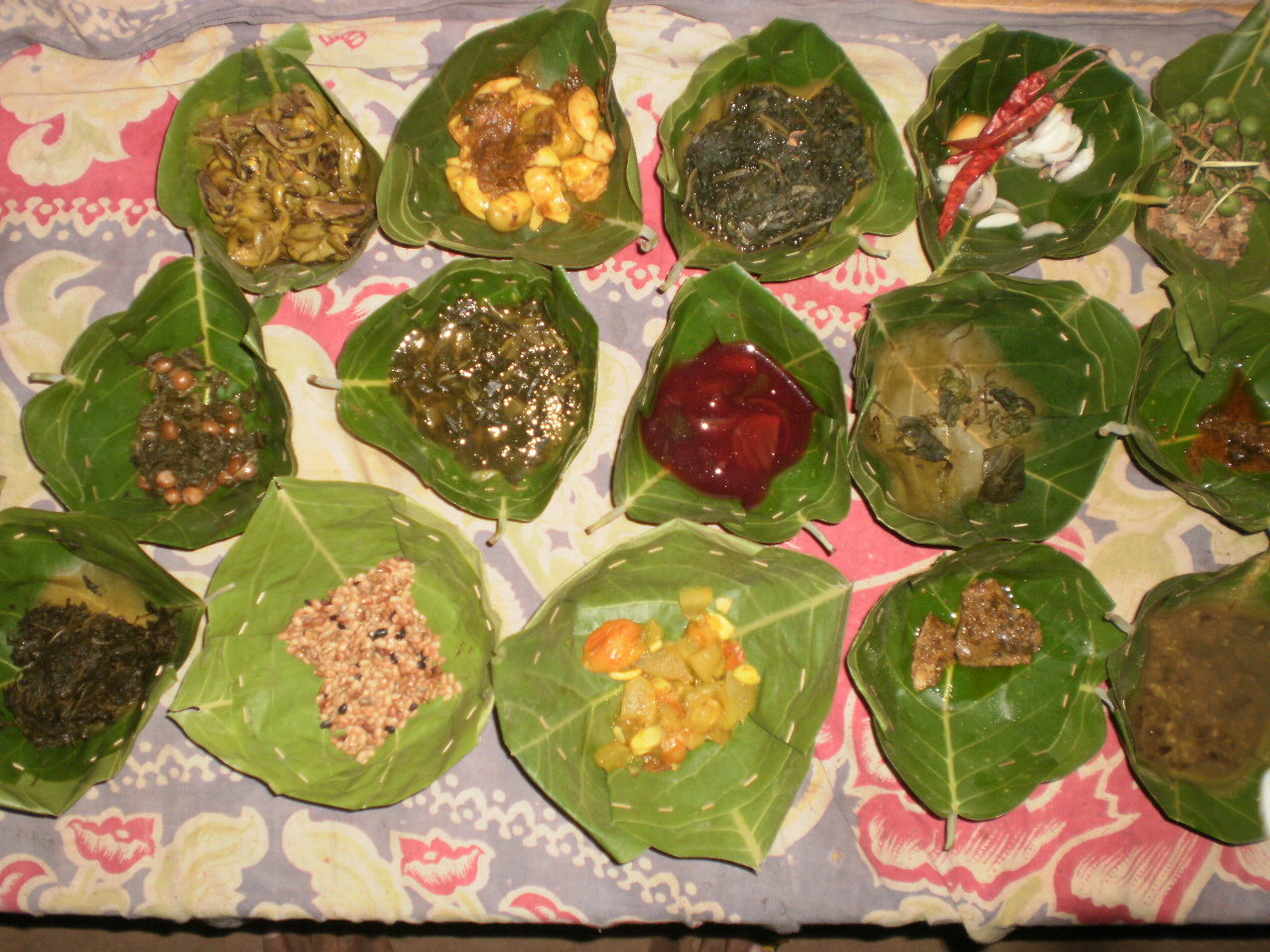Get Next Shodhyatra Update:
Phone:
079-27913293, 27912792
Email:
shodhyatra@sristi.org
25TH SHODHYATRA, NARAYANPUR, CHATTISGARH
SANDWICHED STRATEGIES OF SURVIVAL IN BASTAR: PART-I
Due to frequent newspaper reports about violence in Bastar region due to conflicts between leftist extremists and state agencies, there was a palpable fear in the air. Some of the older shodhyatris were deterred by the incidents which happened only a few days before the commencement of the yatra. But many young people felt emboldened to explore and experience a reality that often remains obscure. After Purulia, Koraput, Dhemaji, Arku Valley, Champaran, Anantnag, etc., Narayanpur, Bastar was the next conflict-prone region to be explored. The shodhyatris wanted to learn, share and understand the roots of anger, agony and assertion in a tribal region sandwiched between naxalites and the administration.
t will be folly to assume that the people support violent means of resolving social conflict. But when local administration does not discriminate and paint all assertion as defiance, there is not much left to choose from. In the next part of the report, we will also share the response of the senior administration to whom a presentation was made about the learning. We will not share however, the tensions yatris had to go through due to indifferent and disrespectful police administration. That can be ignored.
Sometimes, while shaving the wood, a knife gets blunted. It can be sharpened by another piece of wood or even stone. But when the artisans who make structures don’t care about finer nuances of sharper edges, they work with the blunt knives. Bastar has gotten into a trap of such artisans who run the administration with blunt tools. They are not interested in sharpening their perceptions, they don’t want to discriminate while dealing with local communities. Discrimination requires depth, engagement and understanding. Painting every tribal with the same paint is easy. Calling all of them naxalites does not require a great intelligence. But leaving that aside for a moment, what we learned in this Yatra was not just about every day struggle to survive but also ways of reducing the angst by humour and creativity. Laughing doesn’t come easy but without that, the shadows become longer.
How do local communities cope with administration which has forgotten the art of discrimination?
The journey through Narayanpur reminded us that future unfolds, as it does, still because young people are struggling against such heavy odds and yet, are not giving up.
Bhujbal is one such young boy, whose father has given his entire life for social service. His father works day and night to take patients to hospital, get children admitted,
and collect butter milk from the Ramkrishna Ashram or local villages for free distribution among tribals. Bhujbal told us how he had upturned the jars full of liquor as a young school student along with his friends. He failed in checking the spread of liquor, a business which is patronised, unsurprisingly by some ‘well-wishers’ in police and local administration. What is more, he added, now every village had arena of cock fight. The liquor magnets had done extensive market research. They found that when people get excited during the cock-fights, the sale of liquor increases. State earns taxes and people lose their autonomy, trapped as they get in liquor loans. The story of Ghadchiroli, Maharashtra is waiting to be repeated here, when local women had protested against liquor sale and the same was ultimately banned. Bhujbal is one of very few tribals in this region who holds a post graduate degree in geography but without a job. That does not deter him to pursue the path of social service. He helped SRISTI’s kshetriya shodhaks Purushottam, Chetan and Mukesh in planning our Shodhyatra. Thanks Bhujbal.
STAY AT RAM KRISHNA MISSION
We reached Narayanpur at around nine in the night. After dinner, Swamiji welcomed the shodhyatris and described the work being done by the ashram in that region. He took pride in saying, and naturally so, that the volunteers from the ashram work in those places where even the police and the para-military forces fear to tread. He was referring to the region of Abujhmad where the ashram is involved in educational,
vocational and health related works. Abujhmad is least ‘developed’ region in the western part of Narayanpur District. This area has never been surveyed and hence its boundaries remain undefined; the census figures are nothing but approximations. The inmates of the ashram were also curious to know about the motive behind the Shodhyatra. When the shodhyatris apprised them of the kind of innovators that Honey Bee network has scouted from Chhattisgarh, their faces beamed with pride.
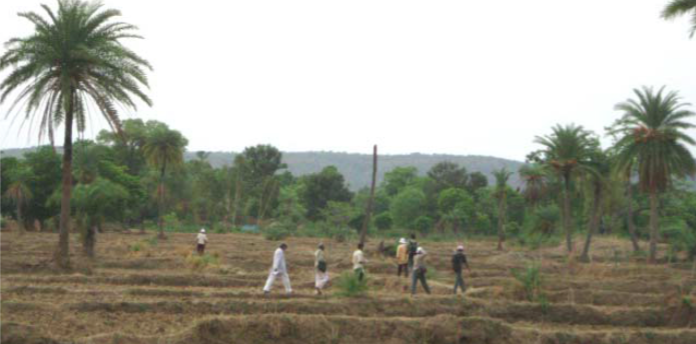
NARAYANPUR : HISTORY
It is believed that thousands of years ago, people of Narayanpur used to live three km away at a village named Bamhani, named after Narayana God’s Bamhani incarnation. In the northern part of the village, there is an old lake. The lake has white, pink and red lotuses, which is very rare. The villagers believe this lake also has gold coloured fish which surface only during monsoons. In the western part of the town, there is a temple of Dhanteshwari Devi amidst hillocks. A fair is held every Sunday here. People in this region collect and sell wild food products collected from the forest; vegetables like Khatta Bhaji (sour vegetables), Bohar bhaji, Koliyari bhaji; fruits like Karmatha, Chironji, Kathal (jackfruit), Aamchur (powdered green mangoes), Cheend ka gud (jaggery made of a fruit similar to date-palm); eatable roots like Kehu kanda, Simi kanda, Dongi kanda; pulses like Urad, Kulthi, Hirwa, Tikhur and other items like Mahua, Bamboo chutney, Kola ki badi, Mung ki phalli (pod of mung), Siyadi ki rasi, Kumhi ki rasi (rope made of Siyadi and Kumhi), bamboo boxes to store wheat, wooden weapons and vegetables like tomato, brinjal, tamarind, etc. Village markets are a meeting point meant more for socializing, especially for a tribal who lives in an expanded space away from each other. Those who don’t value warp and the weft of social capital, cannot imagine, why a tribal travels for two-three days through the jungles just to meet his kith and kin in the markets.
Shakuntala Devi, a Mitanin, health worker welcomed yatris at Imlipadar village, so named due to many tamarind trees in the area. The Mitanin associates have been working on the crucial issues of health and education.
They seem to be perhaps only effective ground level machinery of state government in this region. Among various traditional foods such as jeera bhaji, khatta bhaji, mandiprej etc., the last one, a fermented beverage made of millets, was really
delicious. There was a biodiversity competition where a nine year old child, Surya Singh Dugga, brought 32 species of plants. Rameshwari Dugga also brought 40 species of plants. The Yatris felicitated six women who had brought traditional recipes and the nine year old kid who won the biodiversity contest.
Earlier, the shodhyatris had not seen mud tiles put on the top of the boundary walls of the houses to protect them. The villagers said that this is quite common in this region and the same was corroborated by a shodhyatri from Jharkhand. On the way, we came across a fenced mango tree on common land. On inquiry, it was learned that being a grafted mango, owner had decided to protect it. Similarly, in north Gujarat, a common property institution was noticed where private rights over tree growing on common land existed. As yatris moved through the villages, they noticed remarkable cleanliness all around. One of the shodhyatris proposed that Bastar should be called as the cleanliness capital of India.
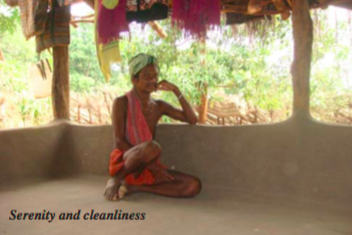
BURY THE HEALTHY, BURN THE SICK (NESS)!
On our way to Sargipal we were intrigued by the presence of graves or “samadhi”. Dhanaram, a herbal healer, explained that those who die a natural death are buried
and given samadhi, while those who die of illness are cremated. The reason behind this was that the healthy body will not harm the soil but the ill body might spread its sickness and hence was cremated. Tulsiram Dugga joined Dhanram in sharing their rich traditional knowledge. They could cure toothaches, use plant extract to catch fish and protect wheat from pests. Actually, a plant named “karra” (Cleistanthus collinus) is used both for fish poisoning and protection from pests. For catching fish, a branch of the plant is put in water along with the fish net. The fishes go numb when they ingest water soluble plant extract and hence, get caught easily.
The readers would recall that a similar plant called locally as “medulava” was used as fish intoxicant, in Dhemaji district of Assam. In an earlier study, this plant, karra known as kodisa in Andhra Pradesh was used to control pest of paddy crop in early stages (Honey Bee: 11(2) 7, 2000). Both the healers were felicitated for sharing such knowledge.
A dish antenna discovered in Sargipal demonstrated the power of technology bridging the distances in certain areas while it expanded the distance in others. In one more village, later in the journey, we could find that many houses had a dish antenna. It will be difficult for the public authorities to mask developments in other parts of the country from the people of Bastar anymore. People would definitely ask more and more questions in the days to come!
BLESSINGS OF A CENTENARIAN
We reached Metadongri village at noon. Here, the shodhyatris took the blessings of Rajaibai Kumeti, a 100 year old grandmother. Also, a few villagers who had gathered to meet Yatris, shared practices for cough cured by harra ka beej (Terminalia chebula); masiha ka beej (Toddalia asiatica) for skin problems, mahua ki tori (Madhuca indica) to save the wheat from pests … After felicitating the centenarian and one herbal healer, Yatris proceeded towards Bamnigaon to have lunch.
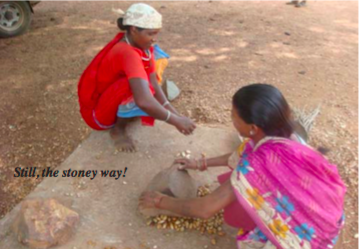
WILL WOMEN SARPANCH MAKE A DIFFERENCE?
The lady sarpanch of Bamnigaon, Sunita Kange had organised the largest gathering of the day. During the meeting, we asked the villagers about how they protected their rice fields from pests. Sunita said that they use karra ki dali (branch of kara) and sulphi ki dali and planted them in the field. This kept away the pests. When asked about the problems faced by them, she said that the villagers faced difficulty in de-seeding the chironji (Buchanania lanzan) nut. They used grinding stones or old “chakki” for the purpose and this caused a lot of breakage and thus lowered price realization.
Sunita had brought nine different types of dishes, among which there was a dish of ants as well called “chepota”. She said that people who eat this do not get malaria. Anyone who is suffering from fever is made to climb the tree where these ants are found. It is believed that when the ants bite the sick person he gets cured of his fever (a claim that remains to be validated:Ed). After felicitating two herbal healers, Sukhdev Sahu and Ramlal Sahu, the Yatra moved on to next village.
The aspiration of the lady sarpanch and the support she commanded from fellow villagers was impressive. But the fact that her lexicon for development did not go beyond road and culvert caused a concern.
Gender did not seem to make a difference yet to their social aspirations. But it is too early to say anything. In the context of innovation from another village in Chhattisgarh, where the panchayat meeting was held in different wards by rotation to ensure better participation of people, many more innovations in governance at first tier of democracy were to be expected. Just as each meeting would focus on the problems of each ward, here too, different sectoral and spatial problems could be focussed on in each meeting. But that would require investment in capacity building in emerging grassroots leaders, particularly women leaders.
It was dark by the time Shodhyatra reached the primary school at Bakulwahi. Nehar Singh from Kukdajhor, a herbal healer was felicitated on the way. The walk was long and exhausting and also the meeting was scheduled for the next morning. Most yatris slept early but some kept on discussing the spirit of emerging democratic leadership in these villages and wondered whether conflicts in this region could not be resolved through genuine empowerment of such institutions. Enormous resources were spent on the fight in the jungles but hardly any resource was being spent on building capacity of those who wanted peaceful and democratic change in this region. An irony, indeed!

NOT PLUCKING MANGOES BEFORE TIME, SAVING HANDPUMP
In the morning we saw people hurrying out of their houses. It was Marka Pandum, a festival celebrated by Maria tribe on the appearance of green mangoes on the trees. The head of each family is supposed to ensure that pigs, cocks, landa i.e. rice or mahua liquor, cooking pots, husked rice and kutki are brought near a a Saja tree. They collectively prepare food and celebrate the festival. Before this festival, the villagers don’t pluck mangoes from the tree. “If we don’t allow nature to run its full course and pluck the produce before its time, we don’t get its full worth, neither nutrition nor monetary value”, said one of the villagers.
Srimati Chakravati Baghel had made tikhur ki barfi (Curcuma angustifolia) for Yatris. It was supposed to cure diarrhoea, stomach ache, gas and prevent acidity too. We also saw something unique at this village which we had not seen anywhere else.
To prevent the hand pump handles damaging the clearance section (as was witnessed during Shodhyatra in Purulia and Bankura), due to frequent impact or children sometimes using the handle as a swing, the villagers had put a wooden bar or tires below the handle to prevent handle swinging too deep down and damaging the section. This was very interesting innovation which we did not see in any other part of the country though we did see damaged handpumps all over. May be Bastar can teach the UNICEF and other designer of handpumps a thing or two!
It showed the resolve of the community which has stopped living with the problems unsolved indefinitely. What will it take to show similar ingenuity in other fields of human survival?
EROSION OF SKILLS AND CRAFTS
Dasuram Lohar, Belgaon, is one of the few blacksmiths who can still smelt iron from the ore found locally, mixed with charcoal using foot bellows in traditional furnaces. He demonstrated the way the furnace works and showed some old iron pieces and sheets made from such iron. Some scholars at IITK (Biswas, 1994) believe that some of the traditional methods of smelting iron can be revived to produce high strength and ductility blades and iron parts (similar to Damascus swords). In all the villages we passed through so far, he was the only one knowing the traditional art.
But even he did not find many customers now. After felicitating him, shodhyatris wondered as to what steps one needed to take, to get scholars or experts in the field to see if they can find unique applications for local skills and knowledge before these are lost irretrievably.
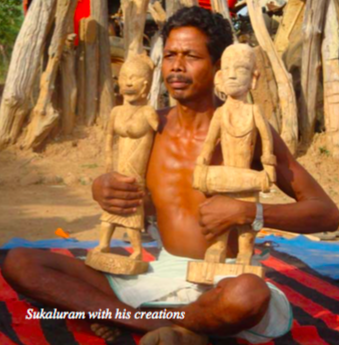
FROM DARKNESS TO LIGHT : IS THERE AN OPTIMAL CHOICE?
The meeting at Kharka village was quite an experience. Initially, for an hour or so, the villagers did not turn up for the meeting, reason being the fear of naxalites’ reaction. Later, some people came to interact. One of them was quite loud and he started questioning the utility of such Shodhyatras, and then veered towards the negligence of government and their sad plight, sandwiched as they were between the naxalites and the police. Initial explanations from Yatris fell on deaf ears and it was becoming very difficult to keep the dialogue going. Gradually, after empathising with their complaints about the neglect in public policy, we explained the voluntary nature of Shodhyatra and its lack of any connection with government. When they heard that all the yatris had come at their own expense in this summer to learn and share what the Honey Bee Network knew, the mood changed.
The villagers regretted that they had no major means to collect or store water in their village. The rain over the mountains is drained away every year eroding the land.
It was ironic that Yatris came across one tank built by the naxalites and another built by the state. When the need for rainwater harvesting structures was all around, why should these be so scare? The villagers reminded the yatris that the place where they were sitting, no outsider dared sit for so long. A teacher, Rup Singh, who had been silent for a while said that the children of the village are very keen on studying but there was no school in the vicinity. Ram Krishna Mission ashram made a school but even that was incomplete and could not be used.
The semi-finished building was there for all to see. The school could not be completed because reportedly, the police did not want it to provide safe havens to naxalites. This was something that stirred all the shodhyatris from within. One could not help thinking about the delicate balance that sustains “life” in such volatile regions.
It dawned on everybody’s mind as to how difficult choices becomes when one has to choose between the lesser of the two evils, i.e. co-operation with the police on one hand or the naxalites on the other hand. Ironically, there were other school buildings on the way which were demolished by naxalites (by forcing local communities to use axe and hammers for the purpose) for just the opposite reason – the fear of those buildings giving safe haven to policemen. Sandwiched life triggers strange music, one can hear perhaps with only inner ears.
Local community members had helped Yatris in cooking lunch. Sitting under a tree, Yatra was entering a difficult terrain. Some of the local villagers offered to come along to ensure that they reached safely to the next point. A three kilometres climb to reach Markabera by night was the goal. One of the local friend who accompanied Yatris seemed to know almost every plant of the region. All along the way, he kept on telling the Yatris about the diverse uses of these plants. He was concerned about Yatris reaching the next village before it got dark. The initial anger, subsequent concern, and bonhomie on the way had made every one realise that respect for genuinity existed. If people were still angry with outsiders, may be the genuinity of the concern had not become evident to them.
